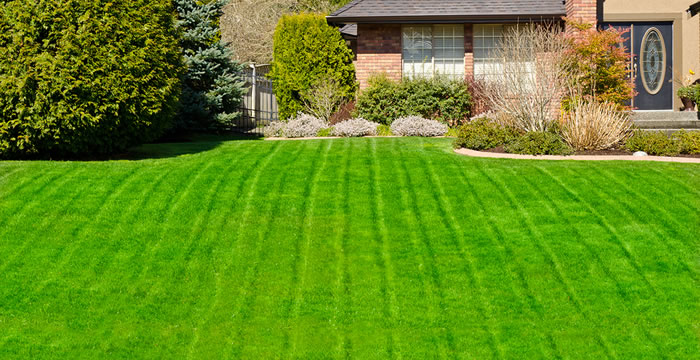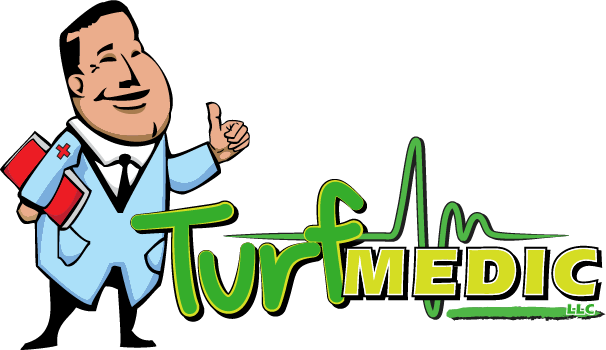Picture this: you’ve spent your entire Saturday morning spreading fertilizer across your lawn, carefully following the instructions on the bag. Three weeks later, you’re staring at the same brown patches that were there before, wondering where you went wrong. Sound familiar? We see this scenario play out countless times here in Greencastle, PA, and it’s not because homeowners aren’t trying hard enough.
Your lawn operates on nature’s schedule, not yours.
The truth is, lawn care isn’t just about what you apply to your grass – it’s about when you apply it. Most homeowners think they can tackle lawn maintenance whenever they have a free weekend, but your lawn operates on nature’s schedule, not yours. Missing the right timing windows can mean the difference between a thick, green lawn that’s the envy of the neighborhood and one that struggles year after year with the same persistent problems.
We’ve been helping Greencastle area homeowners achieve the lawns they’ve always wanted, and the most common question we get asked is exactly this: how often should professional lawn care services actually be performed? The answer might surprise you, because it’s not just about frequency – it’s about understanding what your lawn needs when it needs it most.
The Reality of Lawn Care Timing – Why Most Homeowners Get It Wrong
When we talk to homeowners in Greencastle about their lawn care struggles, we hear the same story over and over. They’ve tried everything – different fertilizers, various weed killers, even reseeding multiple times – but they’re still dealing with the same issues year after year. The problem isn’t usually the products they’re using; it’s when they’re using them.
Your lawn has specific windows of opportunity throughout the growing season when treatments are most effective. Apply a pre-emergent herbicide too late, and you’ll spend the entire summer battling crabgrass that could have been prevented. Miss the optimal fertilization timing in spring, and your grass won’t have the nutrients it needs to compete with weeds and recover from winter damage. These timing mistakes compound over time, creating a cycle where homeowners feel like they’re always playing catch-up.
Poor timing creates a cycle where you’re always playing catch-up with lawn problems.
We see lawns in our area that have been treated inconsistently for years, and the results speak for themselves. Brown patches that never seem to heal, weeds that return stronger each season, and thin grass that can’t handle the foot traffic from family activities. The frustrating part is that many of these problems could have been avoided with proper timing, but once you’re behind schedule, it takes professional intervention to get back on track.
Professional Lawn Care Service Frequency – The Science Behind the Schedule
Understanding how often lawn care services should be performed starts with recognizing that your lawn’s needs change dramatically throughout the year. Here in Greencastle, we work with the natural growing cycles of cool-season grasses like fescue and bluegrass, which have very specific timing requirements for optimal health.
The optimal professional lawn care schedule for Pennsylvania lawns follows these seasonal patterns:
- Spring (March-May): Every 4-6 weeks – Pre-emergent herbicide applications, first fertilization after winter dormancy, and early broadleaf weed control
- Summer (June-August): Every 6-8 weeks – Heat stress protection, pest control treatments, and maintenance fertilization during slower growth periods
- Fall (September-November): Every 4-6 weeks – Overseeding windows, winterization treatments, and final weed control applications
- Winter (December-February): As needed – Snow mold prevention and planning next year’s program
Fall treatments set your lawn up for success next year.
Summer brings different challenges and requires adjustments to our service frequency. During the hottest months, we focus on maintaining the health gains from spring while protecting against heat stress and summer pests. Fall is arguably the most critical time for your lawn, when we focus on overseeding, winterization treatments, and final weed control applications that set your lawn up for success next year.

Factors That Affect How Often Lawn Care Services Should Be Performed
Not every lawn in Greencastle follows the exact same schedule, and that’s where professional expertise makes all the difference. Several key factors influence how often your lawn needs professional attention:
- Grass type and local climate conditions – Cool-season grasses in Pennsylvania have different timing needs than warm-season varieties
- Soil drainage and composition – Poor drainage may require more frequent applications due to nutrient leaching
- Sun exposure and shade patterns – Shaded areas often need different treatment timing than sunny spots
- Family usage and foot traffic – Active households with children and pets may need additional treatments
- Slope and erosion concerns – Lawns on hills may need more frequent attention due to runoff issues
Local expertise makes the difference between generic programs and real results.
Our Pennsylvania climate presents unique challenges that affect service frequency. We deal with hot, humid summers that stress cool-season grasses, followed by winters that can bring snow mold and other cold-weather diseases. Understanding these local conditions is crucial for determining the right treatment schedule for your specific property.
Family lifestyle also plays a role in determining service frequency. Homes with active children, pets, or frequent entertaining put more stress on the lawn and may benefit from more frequent monitoring and treatment. We’ve found that lawns used heavily for family activities often need an extra treatment or two during peak growing season to maintain their health and appearance.
Professional vs. DIY Lawn Care Frequency – A Cost and Time Comparison
When homeowners ask us about the cost of professional lawn care services, we always encourage them to consider the total investment – both time and money – they’re already making in their lawn. Most of our clients were spending 2-3 hours every weekend during growing season trying to keep up with lawn maintenance, plus the cost of products that often didn’t deliver the results they were hoping for.
Professional-grade products aren’t available to consumers, and there’s a good reason for that. The fertilizers, herbicides, and pest control products we use are more concentrated, longer-lasting, and more effective than what you’ll find at retail stores. When you factor in the cost of multiple store-bought applications needed to achieve similar results, plus the value of your weekend time, professional service often costs less than the DIY approach.
The bigger consideration is the long-term impact on your property value and family enjoyment. A consistently healthy, thick lawn doesn’t just happen by accident – it’s the result of properly timed, professional-grade treatments applied by trained technicians who understand local growing conditions. When you consider that your landscape is one of the first things people notice about your home, the investment in professional lawn care pays dividends beyond just the immediate appearance.
Signs Your Current Lawn Care Frequency Isn’t Working
We get calls from frustrated homeowners who’ve been treating their lawns regularly but aren’t seeing the results they want. Usually, the problem isn’t that they’re not applying treatments – it’s that they’re not applying the right treatments at the right time, or they’re not treating frequently enough to stay ahead of problems.
Here are the most common warning signs that your current lawn care approach needs adjustment:
- Persistent brown patches that return to the same spots year after year despite treatment
- Thin, weak grass that can’t handle normal foot traffic from family activities
- Recurring weed problems that seem to get worse each season instead of better
- Seasonal issues like crabgrass or dandelions that you’re always fighting but never preventing
- Uneven color or growth patterns across different areas of your lawn
Healthy lawns maintained professionally rarely have dramatic issues requiring emergency treatment.
Another red flag is when you find yourself constantly reacting to problems instead of preventing them. Healthy lawns maintained with proper professional frequency rarely have dramatic issues that require emergency treatment. If you’re always scrambling to address the latest lawn crisis, it’s probably time to consider a more systematic, professionally managed approach that addresses problems before they become visible.
We regularly hear about new clients’ frustration with dealing with the same problems year after year. Once we establish a proper service frequency based on their lawn’s actual needs, most of these recurring issues disappear within the first full growing season.
Creating a Sustainable Lawn Care Service Schedule in Greencastle, PA
Creating a sustainable approach to lawn care in our area means working with our local climate and soil conditions, not against them. We’ve learned that consistency beats intensity every time – regular, properly timed treatments will always outperform sporadic, heavy applications when it comes to building long-term lawn health.
A sustainable schedule also means budgeting for year-round lawn health, not just addressing problems as they arise. Many homeowners try to save money by skipping treatments during certain seasons, but this often leads to bigger problems and higher costs down the road. We work with our clients to develop service schedules that fit their budgets while still providing the consistent care their lawns need to thrive.
The key to sustainability is partnering with a local service provider who understands Greencastle’s unique growing conditions and can adjust treatment timing based on actual weather patterns and grass response. Cookie-cutter programs that don’t account for local conditions rarely deliver the results homeowners are looking for, which is why we customize our service frequency based on each lawn’s specific needs and goals.
Conclusion
So, how often should lawn care services be performed? The answer depends on your lawn’s specific needs, but for most Greencastle area homeowners, professional treatments every 4-8 weeks during growing season provide the consistency needed for optimal results. The exact frequency varies by season, with more frequent treatments during critical spring and fall periods when your lawn is most responsive to care. When you choose a professional lawn care service Greencastle residents trust, you’re investing in the expertise and consistency that only comes from working with professionals who understand local growing conditions and optimal timing.

Recent Comments